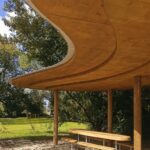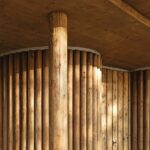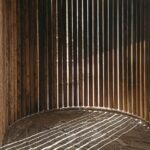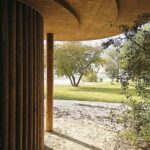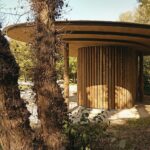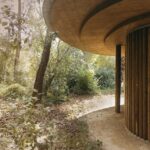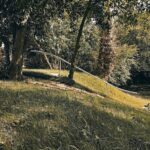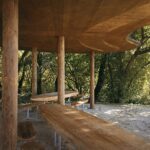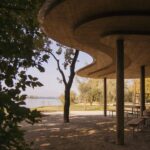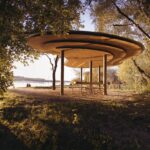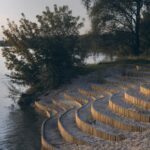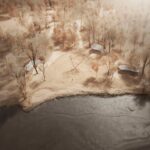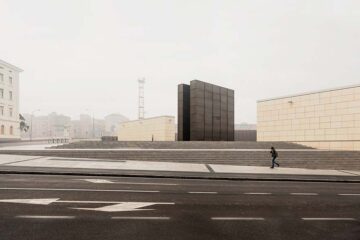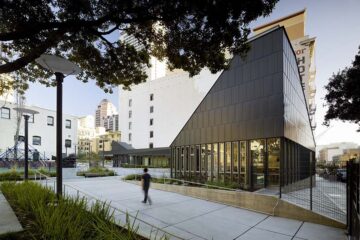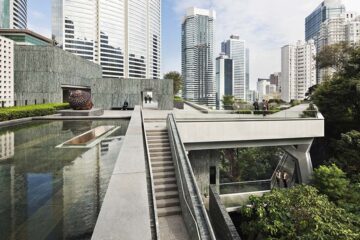Integrating Architecture with Nature: Recreational Area at the Vistula Riverside
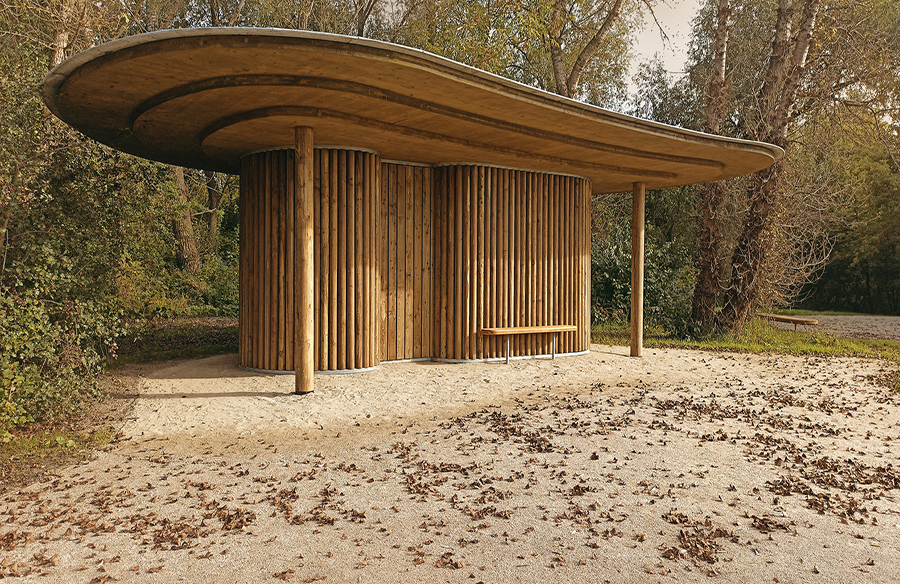
In Warsaw, Poland, architect Karol Żurawski has masterfully crafted a recreational area that seamlessly integrates with the natural context of the Vistula floodplain. Completed in 2020, the project harmonizes modern architecture with the dynamic environment of the river, offering visitors a unique and immersive experience.
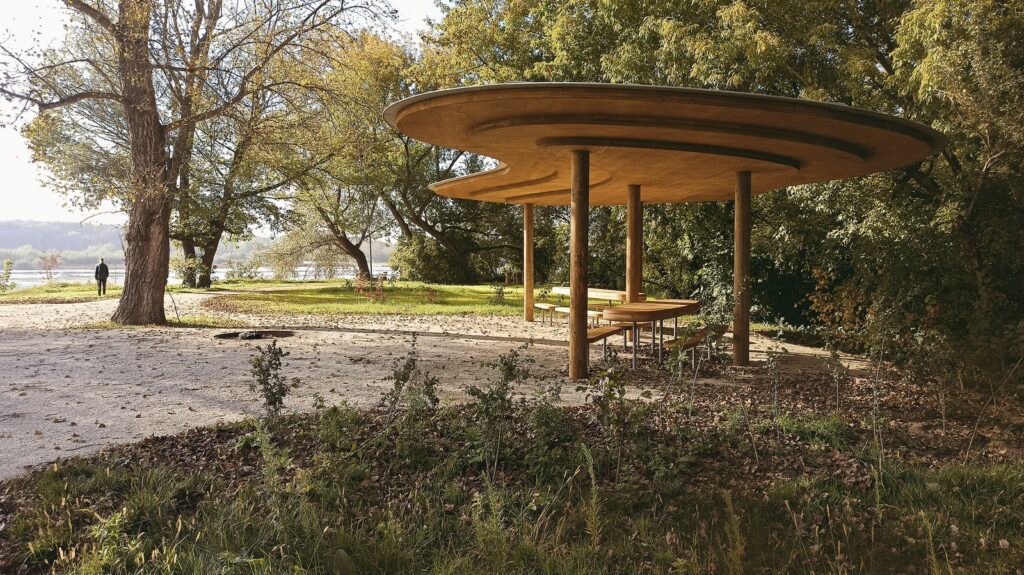
Embracing the Floodplain Environment
The design of the recreational area takes into account the unpredictable nature of the Vistula River, which is prone to flooding. To ensure resilience against flooding, the canopies are constructed with a soft and streamlined shape, minimizing resistance to the force of the flowing river when submerged. This thoughtful approach allows the structures to adapt to the changing water levels, ensuring their longevity and safety.
Innovative Construction Techniques
Żurawski employs modern ecological materials in the construction of the canopies, opting for Cross concrete-laminated timber as an alternative to traditional concrete. This eco-friendly material offers durability and strength while reducing the environmental footprint of the project. The cantilevered design of the canopies distributes forces centrally around the uprights, enabling a circular shape and optimizing structural efficiency.
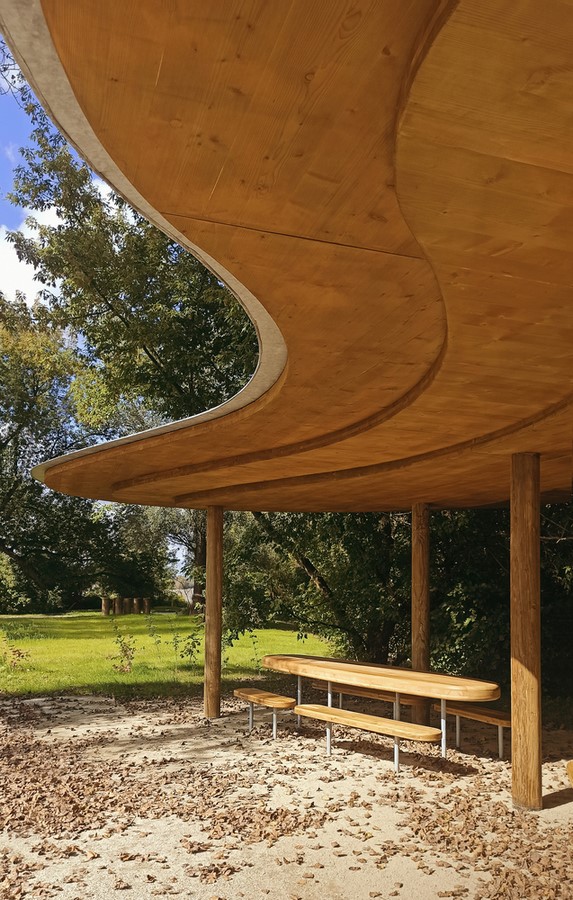
Sustainable Foundation Solutions
In alignment with ecological principles, the project avoids the use of concrete for foundations. Instead, wooden piles are driven deep into the ground, resembling the construction of piers or breakwaters. These piles are anchored at depths of up to 6 meters, ensuring stability and resistance to buoyancy forces in the event of flooding. By prioritizing sustainable foundation solutions, the project minimizes its impact on the surrounding ecosystem.
Blending Functionality with Aesthetics
Beyond its functional considerations, the recreational area is designed to enhance the visitor experience. Picnic tables and benches are sheltered beneath the extended canopies, providing protection from the elements while offering scenic views of the river. The integration of natural materials and minimalist design elements creates a tranquil and inviting atmosphere, inviting visitors to relax and reconnect with nature.
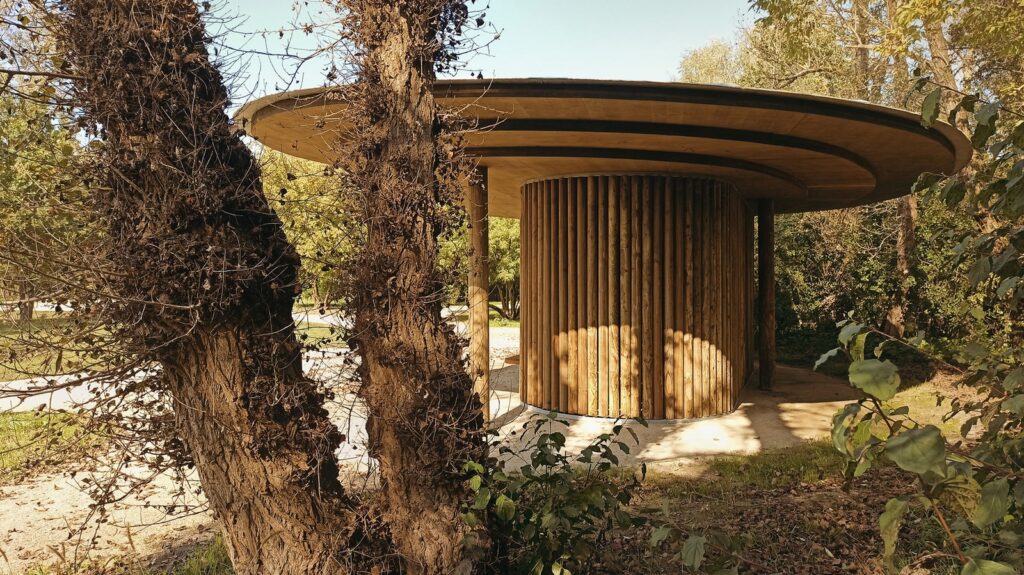
Conclusion
The Recreational Area at the Vistula Riverside exemplifies the successful integration of architecture with natural landscapes, showcasing the potential for sustainable design solutions in flood-prone environments. Through innovative construction techniques and a deep understanding of ecological dynamics, Karol Żurawski has created a space that celebrates the beauty of the Vistula River while prioritizing resilience and functionality.
- OLYMPUS DIGITAL CAMERA


